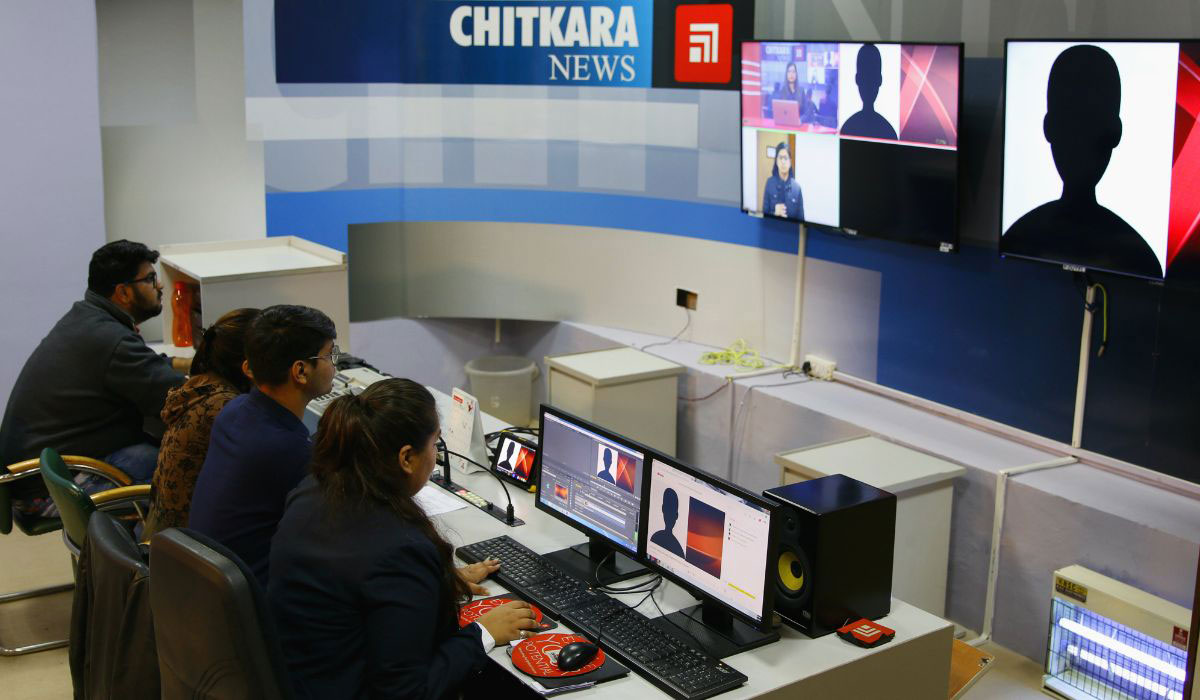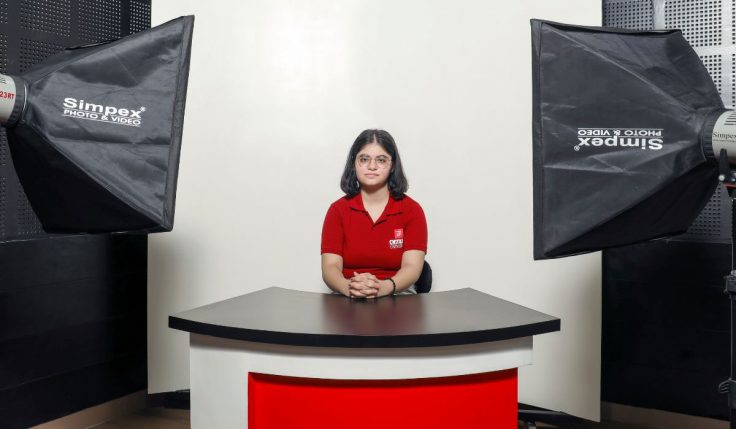Mass communication has grown into a dynamic and impactful arena in today’s digitally connected society. It includes the transmission of information to a large number of people via numerous methods. Individuals who study Mass Communication get the knowledge and abilities needed to communicate successfully across many media channels.
Understanding the methods and strategies used in the field of mass communication is critical for those interested in pursuing a career in this subject. Whether in journalism, advertising, public relations, radio, or digital media, a thorough grasp of Mass Communication instruments is essential.
What is Mass Communication?
The conveyance of information to a wide, diversified audience via numerous media channels is referred to as mass communication. It is the study of how messages are created, delivered, and consumed across many platforms such as television, radio, newspapers, magazines, social media, and others.
B.A. in Journalism & Mass Communication Program:
One of the popular degree programs in this field is the B.A. in Journalism & Mass Communication. This program offers students a holistic understanding of communication theories, media ethics, storytelling techniques, and practical skills needed to excel in the industry. Through a combination of theoretical knowledge and hands-on experience, students delve into the diverse facets of Mass Communication.
Tools for Mass Communication
Journalism Tools:
News Writing Software: Associated Press (AP) Stylebook, Grammarly, and Hemingway Editor are instrumental for precise and accurate writing. These tools aid in adhering to journalistic standards, grammar checks, and enhancing readability.
Research Databases: LexisNexis, ProQuest, and Google Scholar serve as comprehensive repositories for conducting in-depth research and gathering information. These databases offer access to a wide array of scholarly articles, news archives, and academic resources.
Broadcasting Tools:
Broadcast Equipment: Essential equipment such as cameras, microphones, lighting setups, and editing software like Avid Media Composer and Adobe Audition are fundamental for broadcasting quality content. These tools ensure professional-grade production and post-production processes.
Live Streaming Platforms: Platforms like OBS Studio, Twitch, and YouTube Live facilitate real-time broadcasting. They enable live streaming of events, interviews, and discussions, fostering immediate interaction with audiences globally.
Public Relations Tools:
Analytics Tools: Google Analytics and social media analytics platforms offer insights into audience behavior, engagement metrics, and campaign performance. These tools aid in measuring the effectiveness of marketing and communication strategies.
Public Relations Software: Platforms such as Cision, Meltwater, and Hootsuite are essential for media monitoring and management. They allow for tracking media mentions, managing PR campaigns, and monitoring brand reputation across various channels.
Podcasting Software:
a. Tools such as Audacity, GarageBand, and Adobe Audition cater to podcast creation and editing. These platforms facilitate audio recording, editing, and production, enabling the creation of engaging podcast episodes.
Digital Media Tools:
Social Media Platforms: Facebook, Twitter, Instagram, LinkedIn, and other platforms play a pivotal role in modern communication and content dissemination. These platforms facilitate direct interaction with audiences and allow for the sharing of multimedia content, fostering engagement and reach.
Graphic Design Software: Adobe Photoshop, Canva, and Illustrator are essential for creating visually compelling content. These tools enable the design of graphics, infographics, logos, and other visual elements crucial for effective communication across various media channels.
Video Editing Software: Professional software like Adobe Premiere Pro, Final Cut Pro, and DaVinci Resolve are indispensable for video production and editing. They offer a range of editing features, effects, and capabilities to craft high-quality videos for diverse media platforms.
Media Monitoring and Analysis Tools:
a. Tools like Brandwatch, Talkwalker, and Mention help in monitoring media mentions and analyzing sentiment across various online channels. These platforms assist in understanding brand perception and audience sentiment.
By leveraging these diverse tools and platforms, professionals in the field of Mass Communication can optimize their strategies, engage audiences effectively, and adapt to the evolving landscape of media and communication. Mastery of these tools is crucial for success in this dynamic and multifaceted field.
Exploring these tools within the curriculum of a B.A. in Journalism & Mass Communication program allows students to gain practical exposure. Hands-on experience with these tools is crucial for preparing them to excel in the dynamic landscape of Mass Communication.
Conclusion:
Aspiring Mass Communication students should comprehend the significance of mastering the tools and techniques integral to this field. A B.A. in Journalism & Mass Communication program provides a solid foundation, enabling students to navigate and utilize these tools effectively.
In today’s digital age, where communication plays a pivotal role in every sector, a career in Mass Communication offers an exciting and ever-evolving landscape. Embracing the tools of Mass Communication empowers individuals to become adept communicators capable of making an impact across various media platforms.
Chitkara University School of Mass Communication: Nurturing Media Mavericks
Nestled in North India, the Chitkara University School of Mass Communication stands as a premier institution dedicated to shaping the next generation of media and communication professionals. The institute’s academic portfolio is meticulously tailored to meet the dynamic demands of the media industry. Offering programs like B.A. in Journalism and Mass Communication, M.A. in Journalism and Mass Communication, and a Doctoral Program in Mass Communication, CSMC lays the foundation for students aspiring to thrive in this ever-evolving field.
Guided by an experienced and diverse faculty, Chitkara University’s curriculum aligns with the UNESCO Model Curricula for Journalism Education. With state-of-the-art facilities, including a television studio, production control room, editing lab, and Radio Chitkara 107.8 FM managed by students, Chitkara University epitomizes a commitment to hands-on learning and practical skill development.
In essence, the Chitkara School of Mass Communication transcends being just an educational institution; it serves as a launchpad for passionate media enthusiasts. Fusing rigorous academics, practical exposure, and industry-aligned programs, CSMC empowers students to chart their trajectory in the dynamic and ever-evolving sphere of media and communication.






